Grabenstr. 18
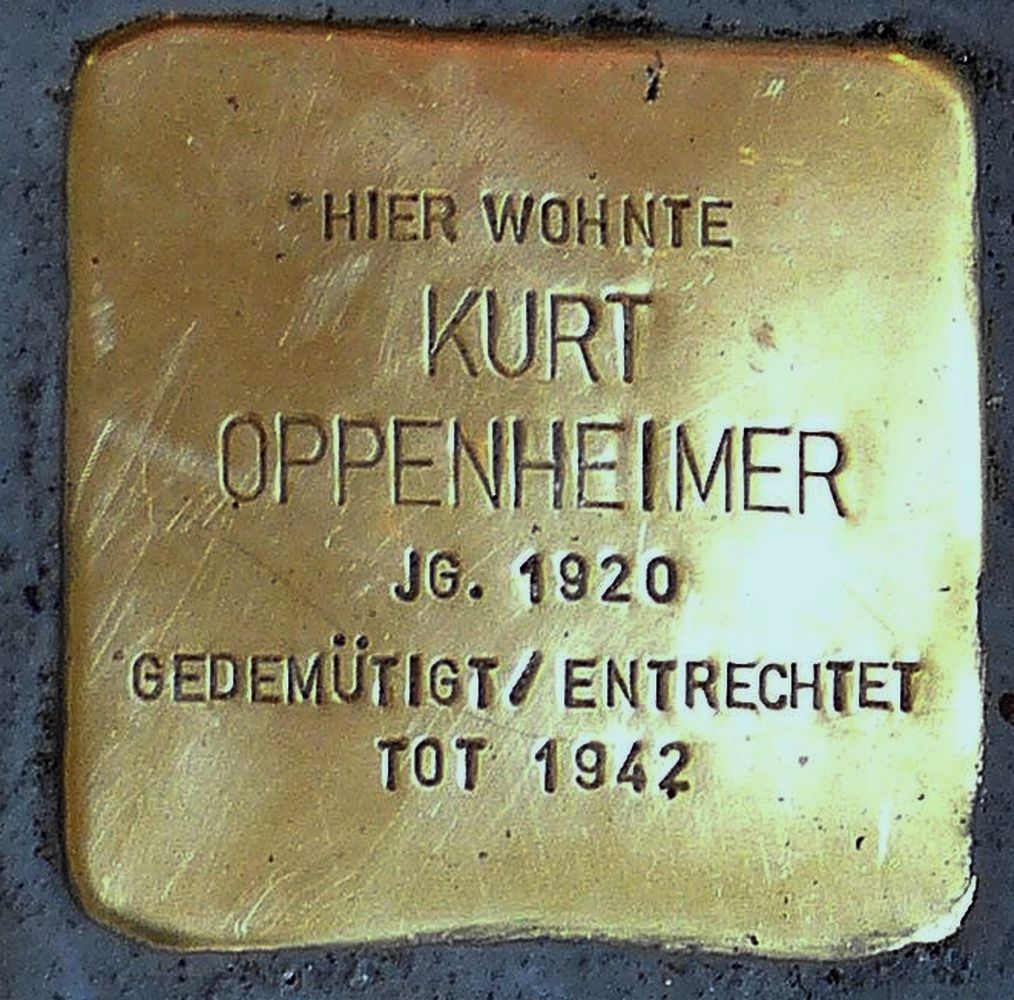
For the parents of Kurt, Simon and Frieda Oppenheimer, Stumbling Stones have already been laid in 2009 in front of their house at Grabenstraße 18.
Why did we, the members of the Stumbling Stone Initiative Göppingen, hesitate to also place a Stumbling Stone for their youngest son Kurt? For a long time we were unable to get an answer to the crucial question as to how Kurt Oppenheimer had died.
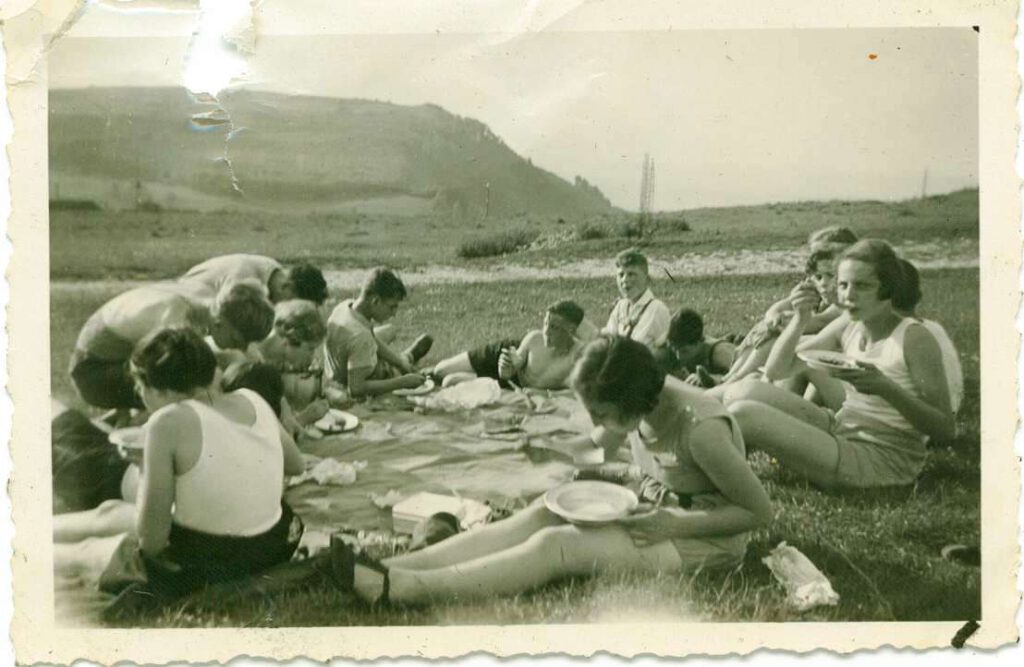
Kurt was born on December 10, 1920 in Göppingen, the fourth and youngest child of the Oppenheimers. He grew up at to-day Spital Square, and his best friend and playmate was the daughter of his neighbors, Lilo Guggenheim (✝), who lived in the house at Grabenstraße 20.
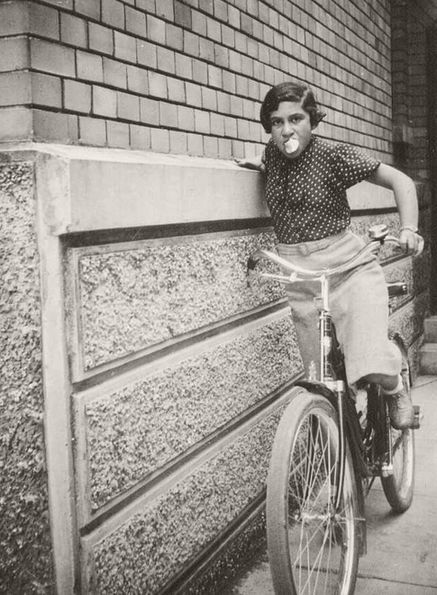
Lilo tells of their shared adventures as children in her book ‘This Also Will Pass’. They were soul mates, and even during their school days, when Kurt attended the Real gymnasium, today the Freihof High School for boys, the two friends and their families still remained close. Lilo and her parents moved to Stuttgart in 1937, but the contact with the Oppenheimer family was not interrupted. At that time Kurt wanted to obtain his intermediate high school certificate, even though anti-Semitic harassment was making life an ordeal for “Oppel”, as he was known in his class. He was at that time of short stature and therefore did not excel in physical education classes. His only other Jewish classmate, Rolf Heimann, also had to endure ridicule since he ‘only’ possessed talent in music, not in sports.
One can only imagine the deep scars which were caused by the first deportation after the State Pogrom Night. At seventeen years of age, Kurt was the youngest of the 27 men of Jewish origin from Göppingen who on November 12, 1938 were transported in trucks to Dachau for the supposed purpose of “re-education”. He was released on December 29, 1938 after half a month of agony and fear of death. From that time on his only goal was to find a way to get out of Germany.
On March 8, 1939 Kurt was able to flee to England, five months before his friend Lilo, who got a position as a domestic servant on the Isle of Wight. Both Kurt and Lilo searched for someone they might know in the foreign land. Kurt found support from his oldest brother Lothar who had already immigrated to England in May 1937.
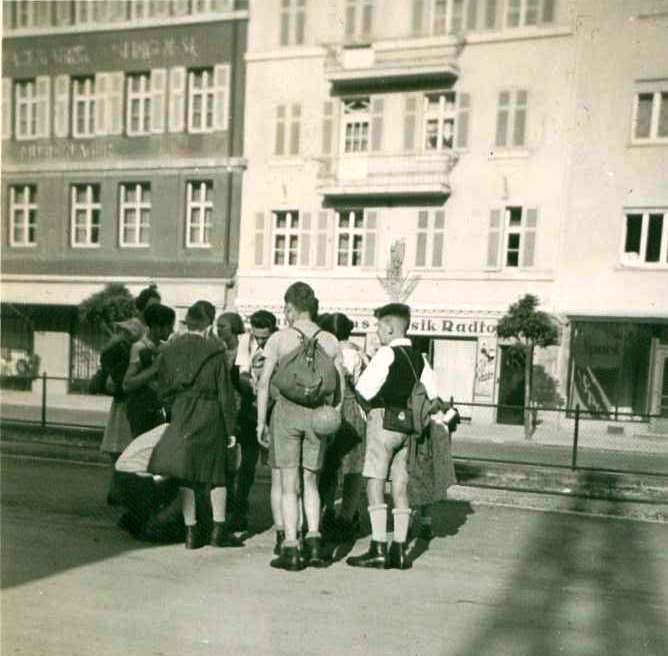
When we started to research the fate of Kurt Oppenheimer in 2009, we turned to Lilo Guggenheim, whose married name was Levine and who lived in America. She was glad to give us information. Her contact with Lothar Oppenheimer had never been interrupted. She was very upset by Kurt’s fate.
Like all adult men of German nationality, Kurt Oppenheimer was held in a British internment camp after the start of the war between Hitler’s Germany and Great Britain, but we do not know which camp he was sent to. The British government later decided to deport some of the internees to their former colonies of Australia and Canada, and according to Lilo Guggenheim’s recollection Kurt Oppenheimer was one of the emigrants who were going to be deported from Great Britain to Canada in 1940. He supposedly had been on the ship Arandora Star which sailed from Liverpool in England on July 2, 1940 at 4:00 a.m. to St. Johns, Newfoundland, and which was torpedoed by a German submarine on the same day, at July 2 at 7:58 a.m. On board were 1,673 people, of whom 805 died and 868 survived. Of the 1,299 internees and prisoners-of-war on board, 586 Italian and German internees survived. Among the dead were 243 Germans. Lilo had learned that Kurt had been one of the internees who did not survive the attack by the Germans. Richard Fleischer, the youngest son of the Fleischer family and a Holocaust survivor himself who had lived at the Hauptstraße in Göppingen, also had heard this version of Kurt’s tragic death. Our attempts to review the passenger list were unsuccessful, because either a list of the passengers’ names had never been prepared or it could not be located.
However, the information from the restitution files for Kurt’s parents, Simon and Frieda Oppenheimer, which we were able to inspect in the Ludwigsburg State Archives, read differently from the reports of Lilo Guggenheim Levine and Richard Fleischer. The negotiations regarding the emotional and financial damages suffered by the family started in 1960. The following were listed as heirs, siblings of Kurt:
Selma Heimann, née Oppenheimer, who lived in Israel
Erna Oppenheimer, who had remained single and lived in England
Lothar Oppenheimer, who had immigrated to America in 1948 pursued a career as a businessman there.
The documents read: “There are no other heirs. Another son, Kurt Oppenheimer, single, businessman in London, Number 1, 7 St. Mary’s Grove, lost his life when an English warship was torpedoed on the route from Australia to England prior to the inheritance proceedings. I hereby refer to a photocopy of the certification by the English Naval Office from June 18, 1943 in the estate documents.”
Now we had two different dates of death for Kurt Oppenheimer, and we were initially puzzled by the place of his death – an English warship on its way from Australia to England?
We got in contact with Mrs. Rut Ben-Zeev, the daughter of Selma Oppenheimer who lives in Israel. She had completed a memorial page for her uncle Kurt at Yad Vashem in 2000. We had the text translated, which was written in Hebraic. The question regarding the cause of his death was answered as follows: “Drowned in the ocean after incarceration and release from concentration camp, on the way from Australia to… (this word is indecipherable) during World War II.” A date of death is not listed on the form. Unfortunately Kurt’s niece could not help us any further. She had received the information from her deceased mother and her uncle Lothar and had not been able to get more detailed information about Kurt Oppenheimer’s death from them. Her testimony caused further confusion for us; possibly due to language difficulties she indicated that Kurt had died while he was a member of the English military. That might have been possible, because several German internees had been granted their freedom rather quickly and were able to enter English military service beginning in 1941/42. We did not want to disregard any possible leads and asked an English amateur historian for help in looking for Kurt Oppenheimer’s name on the lists of fallen British soldiers during World War II. However, this turned out to a hopeless task because Jewish immigrants of German origin were given English names as soon as they entered English military service.
Mrs. Ben-Zeev suggested that we get in contact with her uncle Lothar. However she added that due to his high age of then 95 he might possibly not be able to give us information about his brother’s fate. That is how it then came about. We came in contact with Lothar Oppenheimer’s adopted son who felt it would be better if we did not upset his aged father with questions about the Holocaust and the National Socialist past.
This variety of uncertain explanations deterred us from placing a stumbling block for Kurt Oppenheimer in 2009. Three years later, Claudia Liebenau-Meyer found a concrete reference to Kurt Oppenheimer’s fate when she looked again at Paul Sauer’s work on the fate of the Jewish citizens of Baden-Württemberg during the National Socialist period of persecution from 1933 to 1945. Paul Sauer writes: “Approximately 2000 of them (= the German internees in Great Britain, kmr) had to make the ship voyage to Australia on the ‘Dunera’ under tough prisoners-of-war conditions and during the tropical summer with German sailors and other internered Germans. During the eight-week-trip some blokes who were working as guards on the ship, stole their personal belongings. After their arrival in Australia they were at first locked up in two camps fenced by barbed wire.”
Kurt Oppenheimer was first sent to the camp near Hay (New South Wales), and in May 1941 he was transferred to the Tatura camp (Victoria). Members of the Upper and Lower Houses of the British Parliament advocated for the rights of the refugees, and because of this the first internees were freed in July 1940. By the middle of 1941 most of the refugees had been released from the internment camps, however not those who were imprisoned in Australia. The Australian authorities treated the internees as prisoners-of-war. Attempts in England to obtain better treatment and release for them led to Kurt Oppenheimer finally being freed among the last group of internees to be released. In October 1942 their return trip back to England as arranged. The way to freedom now seemed assured for him.
However, this is what happened: “Forty refugees, among them 22-year-old Kurt Oppenheimer from Göppingen lost their lives during the return trip from Australia when the ship on which they were traveling was torpedoed.” In 1960 Lothar Oppenheimer had already made this statement about his brother’s death to Paul Sauer who had started to assemble evaluation sheets for each Jewish citizen residing in the later Baden-Württemberg since March 1, 1933. Now we had the sad confirmation of how the life of Kurt Oppenheimer ended tragically on October 29, 1942 – on his way to England and to freedom! The date of the sinking of the ship on which Kurt Oppenheimer was to return to Europe is, as mentioned, October 29, 1942. On this day, the ship ‘M.V. Abosso’, a passenger ship chartered by the British government, was sunk in the South Atlantic, 700 nautical miles northwest of the Azores by the German submarine U 575. The Abosso had set off from Australia and, after a stopover in Cape Town, was heading for Liverpool. 44 internees were to return to England on this ship; only one of the internees survived, Kurt Oppenheimer drowned.
Gunter Demnig laid on 2nd October 2013 a memorial stone for Kurt Oppenheimer next to the stones of his parents in Grabenstraße 18.
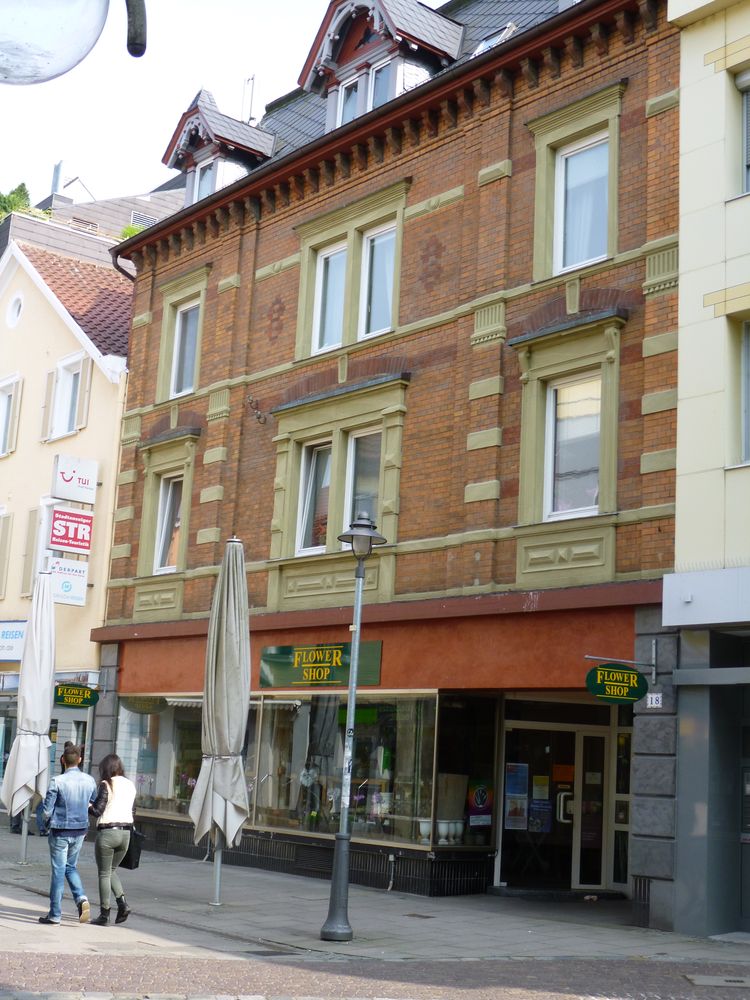
Elad Dente, the grand-grand-son of Kurt’s sister Selma, arrived from Israel. He took an active part at the memorial ceremony.
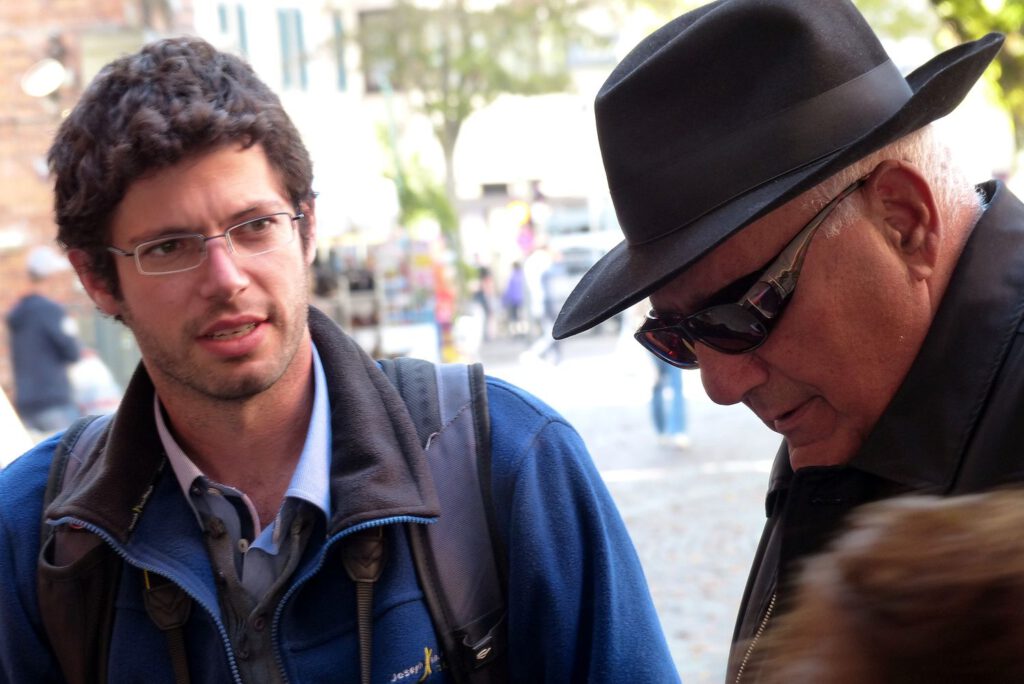
(01.10.2024 clm/kmr/ww)


Leave a Reply